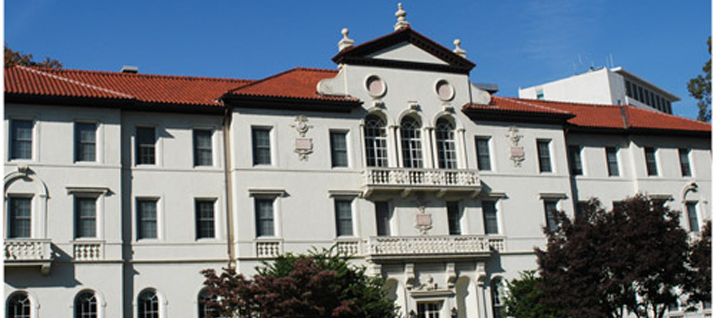October has officially arrived — the fragrance of wet leaves wafts through the air, autumn breezes chill the campus and a mysterious brown muck has tainted the water through some of the sink taps on Emory University’s Atlanta campus. On the evening of Oct. 11, reports began to flood in.
“I turned the hot water all the way up on my Turman sink, and brownish water began to come out,” Turman Hall resident Chris Rivera-Bonilla (26C) said. “I let it run for a while, and the water was still a very cloudy white. I couldn’t see through my clear water bottle.”
On October 12, Emory Residence Life and Housing sent an email to students living in Harris Hall, Complex — which is made up of Hopkins, Smith and Thomas Halls — Few and Evans Halls and sorority lodges, saying the University was informed of an off-campus pipe break. The email stated that “it is possible that you may find discolored water in the taps of your room sink.” Students were advised to “allow the hot and cold water to run until it is clear.”

Harris Hall was among the dorms affected by discolored water. Courtesy of Emory University
DeKalb County never issued a boil water advisory, so the water was safe to drink, according to Emory Residence Life. The email also noted that “Campus Services has worked diligently to ‘flush’ the building system,” although students continued to report discolored water.
Not everyone in these resident halls were impacted — six Few and Evans residents told the Wheel that they did not see discolored water.
Assistant Vice President of University Communications and Marketing Laura Diamond wrote in an email to the Wheel that the water problems occurred when the “DeKalb County [Department of] Watershed [Management] flushed the main system, which led to a temporary, slight discoloration of water at a few locations across the county, including on Emory’s campus.” She added that sediment in the line caused the discoloration.
Emory Ecological Society Vice President Nick Chang (24C) said Emory’s explanation for the discolored water was reasonable given his past experiences.
“In my experience, the [DeKalb County Watershed] is not great at communicating, so Emory being caught off guard by the flushing sounds incredibly likely,” Chang said. “From what I understand, sediment accumulation in pipes is common and typically harmless, so I am inclined to believe this explanation.”
Some Emory community members critiqued the way the University handled the situation, alleging a lack of transparency. Jake Weissman (24C) called the lack of information and clarity from a prestigious university like Emory “pretty ironic.”
“Emory upholds these high moral and ethical values and then does something like this,” Weissman said.
Harris Hall resident Theo Hofmann (26C) agreed with Weissman.
“I was overall kind of annoyed at the fact that there was very little communication from the school about this issue and that we were just informed by our [resident advisors],” Hofmann said. “It was all very unclear.”
However, Diamond clarified the University’s response to the situation, which was rebuked by the Emory community.
“If students noticed discolored water, they were advised to turn on the faucets and allow the water to run until it was clear,” Diamond wrote. “As soon as DeKalb Watershed alerted Emory to the situation, we informed those in the few impacted buildings on campus.”
Ambiguity initially surrounded the situation. When asked about whether or not they knew the cause of the discolorations, the students’ speculations — which are now confirmed to be incorrect — ranged from iron oxide contamination in sewage to toxic chemicals in the water.
‘’This speculation led to an understandable mix of fear and dismay,’’ Weissman said.
However, the implications of the water discoloration are not all bad, according to Harris Hall resident Stephen Trainer (26C). He reported an increased sense of hall rapport and community.
“It was something we could talk about, something to raise our fists against, something that kind of rallied the troops,” Trainer said.
In Harris Hall, residents Leia Marshall (26C) and Deanna Sharpe (26C) aided their fellow third-floor inhabitants by leaving water bottles at the doors of their dorms. Hofmann also fondly recalled going on trips with his hallmates to acquire water.
Complex Sophomore Advisor Terrence Lurry (25C) noted that students who already had clean water offered it to other residents, while others offered showers and water to those residing in the affected halls. The water discoloration also allowed for members of the Emory undergraduate community to have something to joke and complain about together, Hopkins Hall resident Ian Bower (26C) said, explaining that different people were able to find common ground.
“This response, however, does not leave Emory in the clear,’’ Hofmann said.
Water discoloration is not a new issue on campus, according to Lurry. Last year as a member of hishall’s Residence Hall Association executive board last year, Lurry said he attempted to resolve the same issue which occurred repeatedly. He added there was no communication to students affected by water discoloration last year.
”I brought the issue up with Emory, and they then contacted maintenance, but after that, it sort of fell flat,” Lurry said.
Update (10/24/22 at 12:54 p.m.): A previous version of this article stated that this the water was contaminated. In fact, it the water was discolored.
Melina Ross (26C) is from Long Island, New York. She is a pre-med student majoring in interdisciplinary studies and is studying expository journalism in the medical industry. Outside of the Wheel, Ross is a member of the gymnastics and Muay Thai teams and is a member of Remote Area Medical, Film Club, Alloy Literary Magazine, Outdoor Emory and Planned Parenthood Generation Action. In her free time, she loves hiking and reading (especially Sylvia Plath, Donna Tartt and Markus Zusak).




